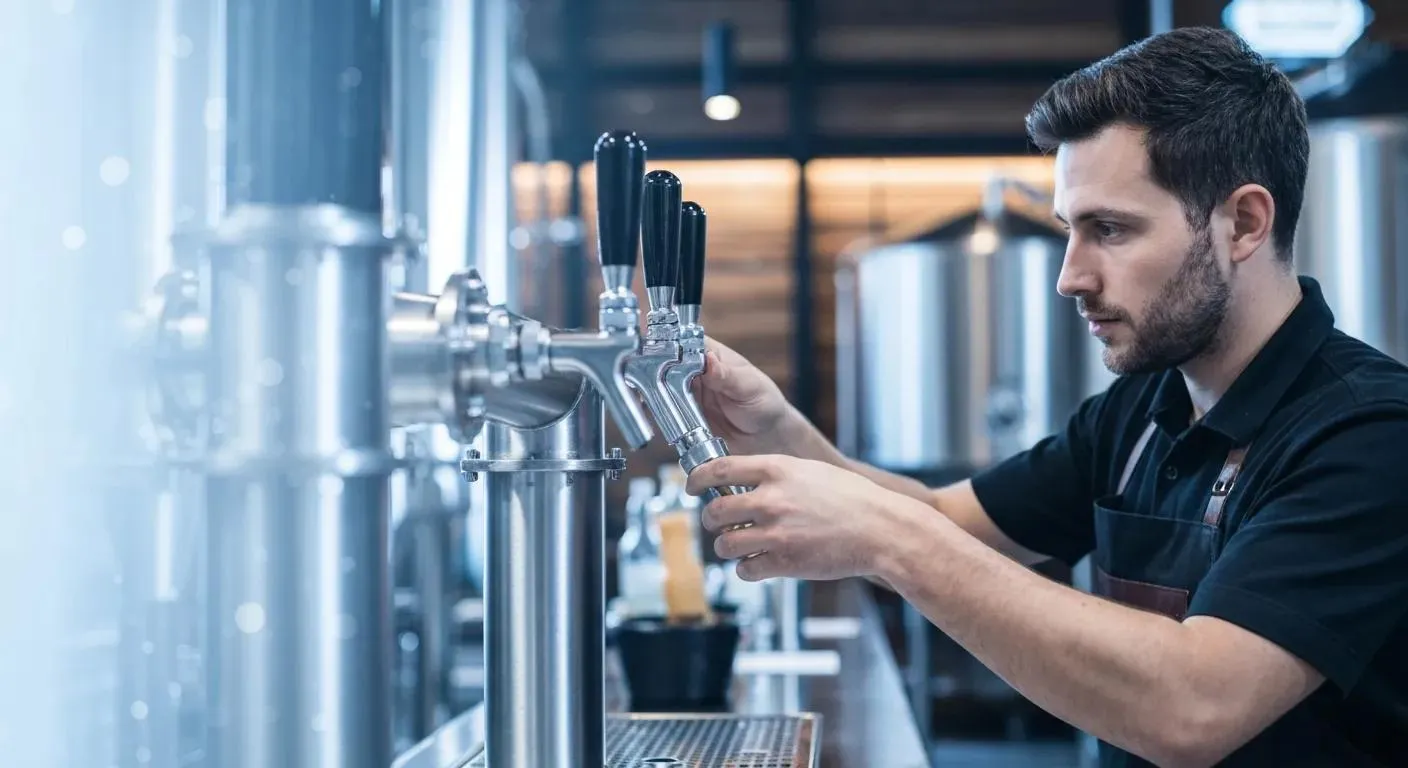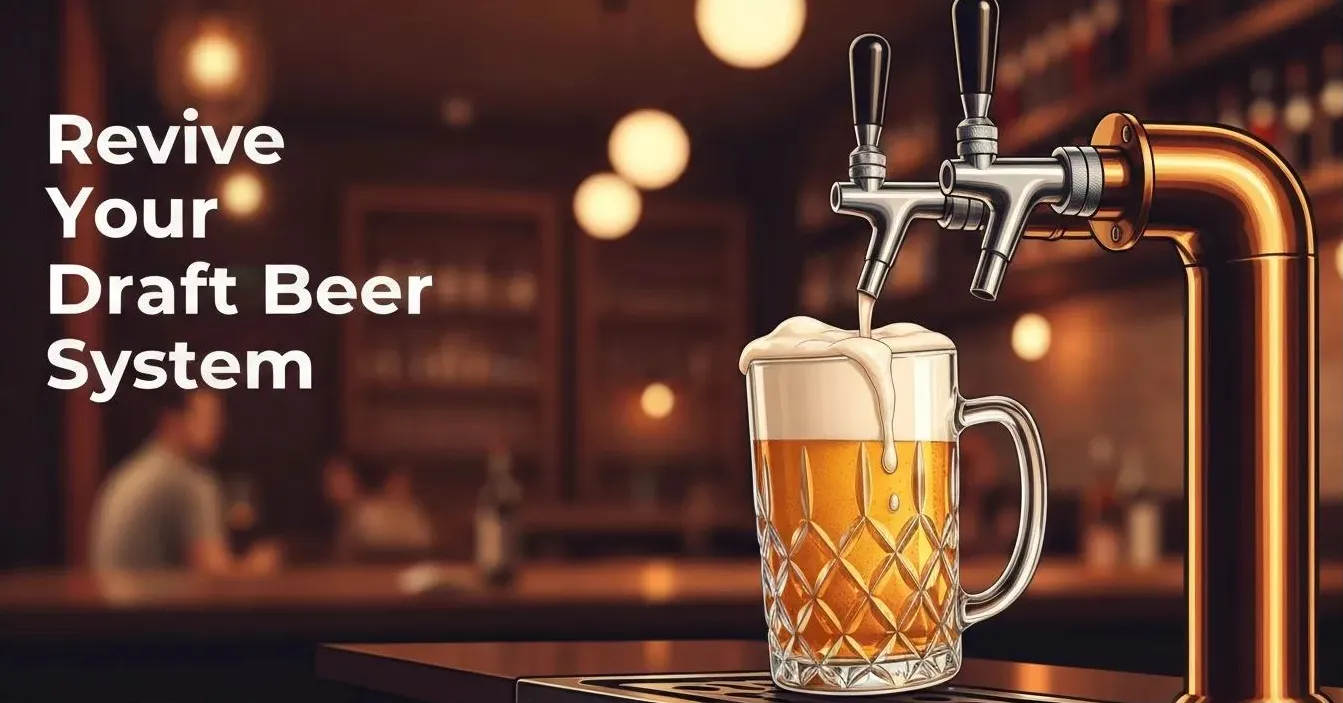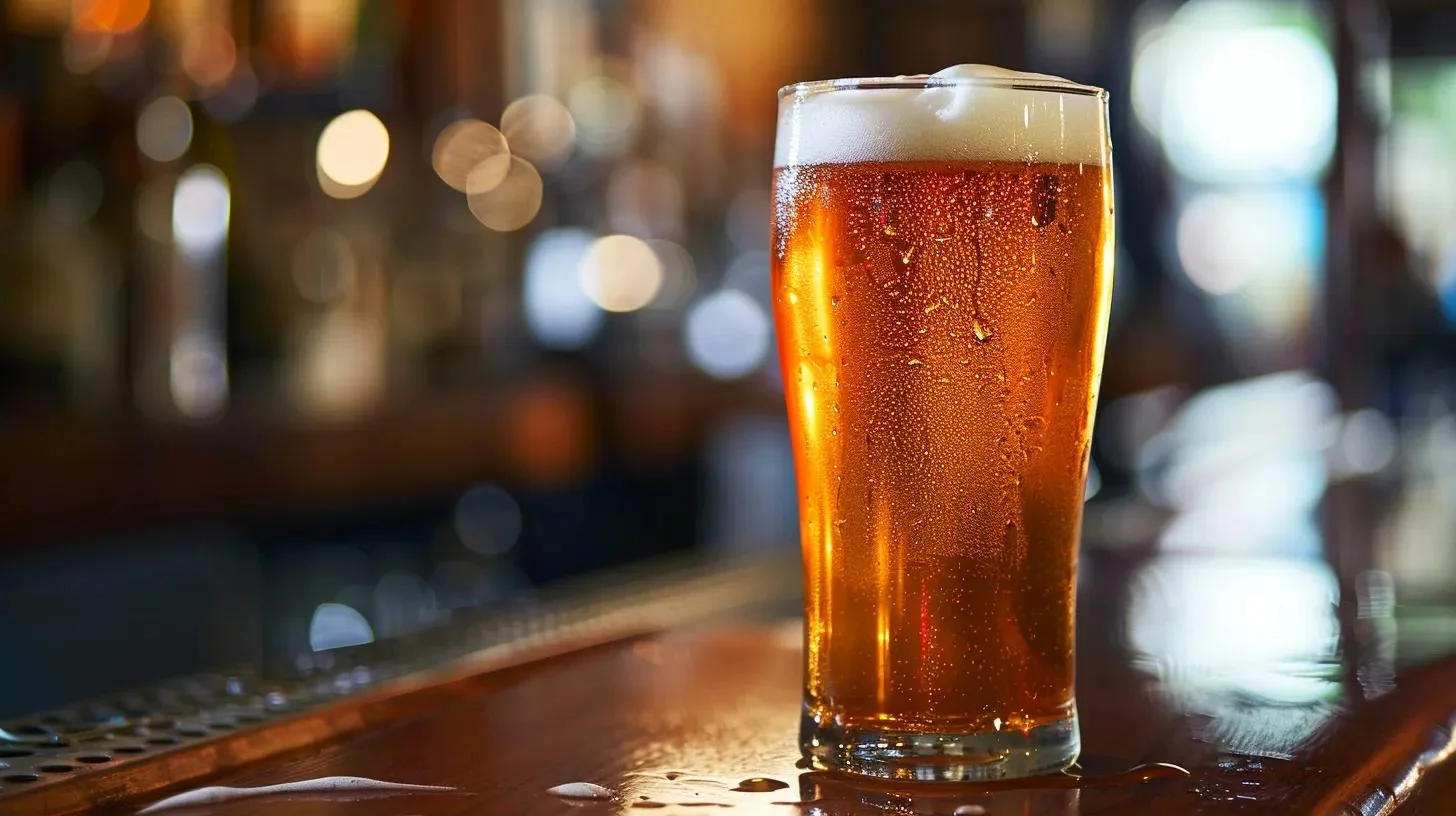Commercial Keg System: Maximizing Efficiency in Beverage Dispensing

A commercial keg system is essential for bars, restaurants, and any establishment that serves draft beer. These systems, along with the necessary kegging equipment, ensure that beer is stored and dispensed at the perfect temperature, maintaining quality and flavor. Choosing the right system depends on the layout and needs of the business, whether it’s a compact direct draw system or a more expansive short draw system.
Understanding these systems can make a significant difference in beer quality and customer satisfaction. Some systems use air cooling, while others rely on glycol to keep beer at the right temperature. Each system has its benefits, catering to different establishments and their unique needs.
Maintaining and operating a commercial keg system requires knowledge and attention. Regular cleaning and checks are vital to ensure the draft beer remains fresh and flavorful. As beer lovers expect the best, having a well-maintained system can enhance their experience and keep them returning for more.
Key Takeaways
- Commercial keg systems are crucial for serving draft beer.
- Different systems suit various business needs and layouts.
- Proper maintenance ensures the best quality and customer satisfaction.
Understanding Commercial Keg Systems
Commercial kegging systems ensure that draft beer is delivered efficiently from the keg to the tap. Key components, different types of kegs, and the role of gases like CO2 and beer gas are crucial for properly functioning these systems.
Components of a Keg System
A commercial keg system consists of several key components. The keg coupler is a critical piece, acting as the connection between the keg and the rest of the draft beer equipment. This coupler attaches to the keg valve, allowing gas to push beer through the system.
Another essential part is the draft tower, which holds the faucet where beer is dispensed. Inside the system, beer and gas lines transport beer and gases. The pressure gauge and regulator control the gas flow from the CO2 tank. These parts work together to ensure that beer flows smoothly from the keg to the glass. Many suppliers offer complete kits that include all the necessary components for setting up a keg system.

Types of Commercial Kegs
Various types of commercial kegs exist to meet the needs of different establishments. The most common types include the half barrel, quarter barrel, and sixth barrel. In addition to these sizes, kegs also come in different configurations such as ball lock and pin lock, catering to various dispensing needs. The half-barrel keg is the largest, holding around 15.5 gallons of beer, making it suitable for high-demand settings.

The quarter barrel, also known as a pony keg, holds approximately 7.75 gallons and is a good fit for smaller venues. The sixth barrel, or torpedo keg, holds about 5.16 gallons, making it ideal for craft beers and limited storage spaces. Each type of keg is designed to cater to specific storage and volume needs.
The Role of CO2 and Beer Gas
The role of gases is crucial in a commercial keg system. CO2 is commonly used to carbonate and push beer from the keg to the tap. A CO2 tank is connected through a regulator to maintain correct pressure levels. This helps in keeping beers carbonated and fresh over time.
In some cases, a mixture of CO2 and nitrogen, known as beer gas, is used. This is commonly applied in stouts and ales, where a smoother texture is desired. The choice between CO2 and beer gas affects the final taste and texture of the beer, making it an important consideration for bar owners.
Also, beer gas can be used in place of beer pumps to pump beer over long distances without over-carbonating the beer. Green Air Supply is a nitrogen separator that delivers the perfect blend of mixed gas for any type of dispensing system.
Setting Up Your Draft Beer System
Setting up a draft beer system involves careful planning and attention to detail to ensure optimal performance. Whether you’re setting up a home system or a commercial one, following best practices, correctly connecting components, and balancing the system are crucial steps. Homebrew kegging systems offer similar benefits, allowing enthusiasts to store and serve their homemade beverages efficiently.
Installation Best Practices
When installing a draft beer system, start by choosing a suitable location. Ensure the area is clean and spacious enough for your equipment, including kegs, lines, and regulators. Proper ventilation is key to maintaining the right temperature, which will help keep the beer fresh. Ensure that all necessary components are in stock before beginning the installation to avoid any delays.
Use a glycol-cooled system for longer beer line runs. This ensures the beer stays cold from the keg to the tap, minimizing waste. Additionally, installing direct draws with shorter lines is efficient for setups with limited space, such as kegerators and wall mount systems off a beer walk-in cooler.
Make sure to regularly inspect all connections and fittings. Tighten any loose parts and replace any that show signs of wear. Doing so prevents leaks and maintains system efficiency, ensuring a steady flow of beer.
Connecting the Components
To connect the components of your draft system, begin by linking the keg to the coupler. The coupler is what allows the beer to flow from the keg. From there, connect the beer line, and air-line to the coupler.
Next, focus on the air lines. Attach them to both the primary and secondary regulators. The primary regulator manages the overall CO2 or nitrogen pressure from the gas tank, while the secondary regulator fine-tunes the pressure for individual kegs. Applied pressure on most kegs will be between 12-14 psi.
Product Trunkline or beer lines should then connect to the beer tower or shank holding a faucet. Depending on the type of system Direct Draw vs Remote Beer System will determine how that goes. Additionally, for remote systems proper installation of a glycol chiller is necessary for proper draft beer dispensing.
How to Balance a Draft System
Balancing your draft system involves managing the pressure and resistance to ensure perfect pours every time. Start by setting the primary regulator to the required pressure for your specific beer style. This usually ranges from 12-14 PSI depending on the beer type.
Regularly calibrate both the primary and secondary regulators. It's a crucial step that affects the beer’s carbonation levels and pour quality. An unbalanced system can cause excessive foam or flat beer, influencing the customer’s drink experience negatively. More importantly for the retailer higher pour costs lead to a negative ROI.
Operating and Maintaining Your System
Proper operation and maintenance of a commercial keg system are essential for ensuring high-quality beer. Regular cleaning prevents contamination and off-flavors, while effective troubleshooting keeps the system functioning smoothly.

Cleaning and Maintenance Routines
Routine cleaning is vital for any beer dispensing system to maintain the freshness of the beer. Draft beer faucets and beer lines should be cleaned weekly to prevent bacterial buildup. Cleaning involves flushing the lines with a recirculating pump.
Drip trays also require regular attention. Drip trays can accumulate spills and residue, so it's crucial to clean them daily to maintain hygiene.
Aside from cleaning, inspecting all components for wear and damage is important. This includes checking gaskets on draft faucets for signs of wear and ensuring beer hoses are not kinked or cracked.
Troubleshooting Common Issues
Even with regular maintenance, issues can arise in any draft beer system. One common problem is beer foaming, often caused by incorrect temperature or pressure. Ensuring the keg storage temperature is consistent and that CO2 pressure is adjusted properly can help alleviate this.
Leaks can occur around the draft beer faucets. Replacing worn gaskets or tightening connections usually resolves this. If beer is pouring slowly, blockages in the lines might be the cause. Cleaning the lines thoroughly should clear any obstructions.
Temperature fluctuations can affect draft quality. Regularly checking thermostat settings and ensuring adequate cooling in keg storage can help maintain consistent pour quality.
Enhancing the Draft Beer Experience
Enhancing the draft beer experience relies on choosing the right accessories and tailoring systems specifically for bars and restaurants. It's essential to match system components to the specific needs of the venue, whether installing a kegerator for ease or opting for a long draw draft system for extensive setups.
Choosing the Right Accessories
Choosing accessories like tap handles, draft towers, and other dispensing equipment significantly impacts the draft beer experience. These components should fit the aesthetic and functional requirements of the venue. Tap handles can be customized to reflect brand identity and make the selection process intuitive for bartenders.
When it comes to draft towers, selecting the right style is crucial. Whether it's a sleek stainless steel design or a vintage look, it should match the bar's overall theme. Meanwhile, quality draft beer equipment such as all stainless will help your system pour great beer while lasting a long time.
Tailoring Systems for Bars and Restaurants
Tailoring draft systems involves understanding the specific needs of bars and restaurants. A long draw draft system might be ideal for venues with extensive distance from storage to serving points. These use a glycol system to keep beer fresh over longer runs. An air-cooled draft system is better for shorter distances up to 25 feet, maintaining stable temperatures with ease.
For smaller bars, a kegerator offers a compact solution that combines storage and dispensing in one unit. Bars looking to expand their offerings might consider growler filling stations or homebrew kegging setups to cater to craft beer enthusiasts. Tailoring involves balancing budget, space, and service needs to offer the best customer experience. These systems are also ideal for serving homebrewed beer, providing a convenient and efficient way to enjoy homemade beverages on tap.
Frequently Asked Questions
Understanding commercial keg systems is crucial for businesses and enthusiasts alike. This section covers essential components, choosing the right system, maintenance tips, renowned manufacturers, home setup instructions, and considerations for purchasing used equipment.
What are the essential components of a commercial keg system?
A commercial keg system generally includes kegs, a cooling method, CO2 tanks, regulators, beer lines, keg couplers, and dispensing faucets or tower. These parts work together to store and serve beer efficiently.
How do you choose the right keg system for a restaurant or bar?
Selecting a keg system depends on factors like space, budget, and beer variety. Options range from Direct Draw systems with kegs stored under the bar to Long Draw systems that cater to larger distances.
What are the best practices for maintaining a commercial keg system?
Regular cleaning of lines and components helps prevent buildup and ensures quality. Checking CO2 levels and replacing worn parts can improve longevity and performance. Proper storage of kegs at the right temperature is also important.
Which manufacturers are known for producing reliable commercial keg systems?
Names like Micromatic, Perlick, and others are known in the industry for their durable and efficient products. These manufacturers provide a range of options suitable for different needs and settings.
What are the considerations when purchasing a used commercial kegerator?
When buying used, inspect the kegerator thoroughly for any damage or wear. Confirm that all components, including the cooling system and CO2 tanks, are functioning. Consider the age and past use to gauge future performance and reliability.
Summary
Commercial keg systems are essential in delivering draft beer efficiently. These systems vary from direct draw systems to long draw systems. Direct draw systems keep kegs in a refrigerated space close to the bar. This setup is simple and often used in smaller venues.
Long draw systems, like the glycol-cooled remote beer systems, are ideal for more extensive setups. They maintain beer temperature using a glycol solution, suitable for distances over 25 feet between keg and tap. This ensures cold beer delivery across greater distances.
Components of draft systems include carbon dioxide or a nitrogen and CO2 mixture known as beer gas, which pushes the beer from keg to tap. Refrigeration assists in maintaining the beer's temperature, ensuring quality from storage to serving.
Keg sizes also play a role in these systems. Options range from small kegs, known as sixth barrels, to larger versions like quarter barrels or pony kegs, ideal for establishments with limited storage.
Choosing the right draft system involves considering the venue size and configuration. Whether opting for a direct or long draw system, proper setup ensures efficient beer delivery. Understanding these systems provides better decisions tailored to specific needs.



